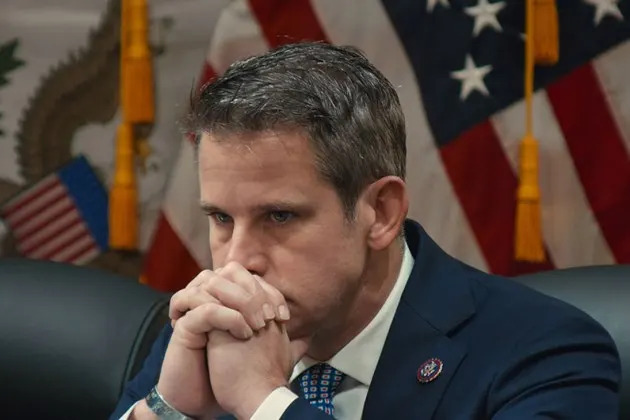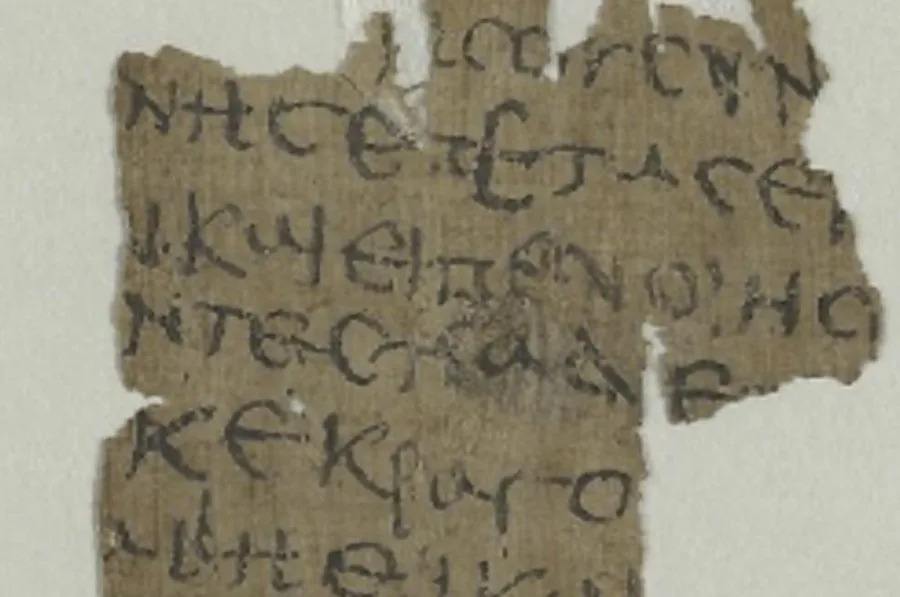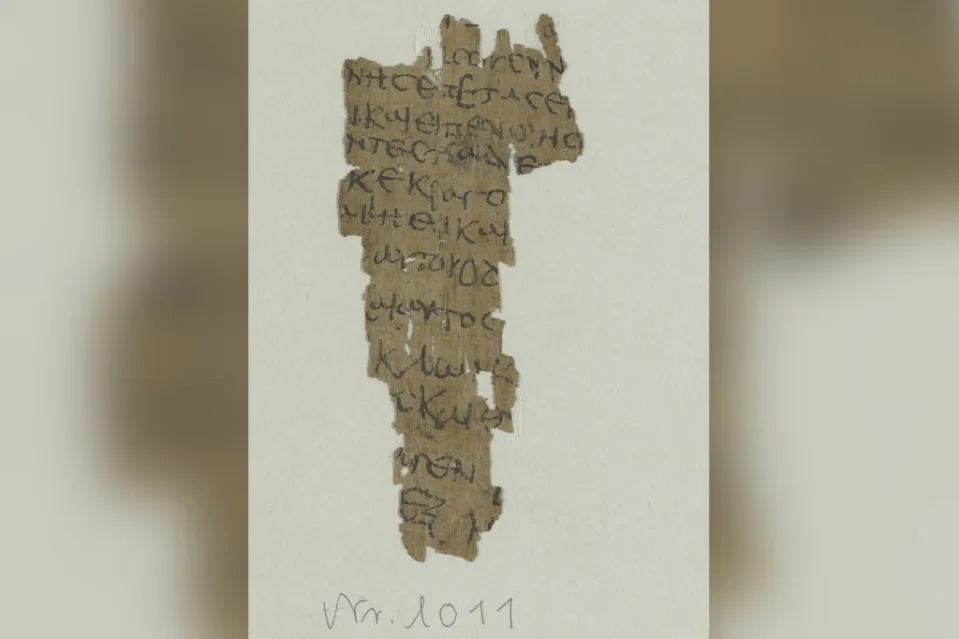The Vietnam War protest movement left us with a number of timeless anti-war songs, which are, despite the absence of a draft and large numbers of American soldiers dying, still extremely pertinent as they underscore the growing dangers posed by Washington’s pathological addiction to war.
Country Joe McDonald’s “I Feel Like I’m Fixin to Die” let loose a volley of vitriol directed against conscription, the war on students, and American oligarchs who have long sought to solve all problems with violence. The song makes use of humor and sarcasm to remind listeners that imperialist wars are invariably rooted in hubris and an assault on reason:
Well, come on all of you, big strong men
Uncle Sam needs your help again
Yeah, he’s got himself in a terrible jam
Way down yonder in Vietnam
So put down your books and pick up a gun
Gonna have a whole lotta fun
And it’s one, two, three
What are we fighting for?
Don’t ask me, I don’t give a damn
Next stop is Vietnam
And it’s five, six, seven
Open up the pearly gates
Well, there ain’t no time to wonder why
Whoopee! We’re all gonna die
How many Americans would reply with “Don’t ask me, I don’t give a damn” if asked why we are waging a proxy war on Russia – a war that could easily result in a direct NATO-Russia conflict and a nuclear exchange? “I Feel Like I’m Fixin to Die” emphasizes the self-destructiveness that goes hand in hand with launching wars devoid of any moral purpose:
Come on, mothers throughout the land
Pack your boys off to Vietnam
Come on, fathers, and don’t hesitate
To send your sons off before it’s too late
You can be the first ones in your block
To have your boy come home in a box
Famously performed by Barry McGuire, P. F. Sloan’s “Eve of Destruction” warns of the danger that Washington’s penchant for warmongering could eventually lead to an apocalyptic confrontation that would threaten the survival of our species. Even more apropos in light of NATO’s Banderite proxy war on Russia, “Eve of Destruction” warns of the dangers of direct superpower confrontation and fulminates against the exploitation of America’s vulnerable youth:
The eastern world, it is explodin’,
Violence flarin’, bullets loadin’,
You’re old enough to kill but not for votin’,
You don’t believe in war, but what’s that gun you’re totin’,
And even the Jordan river has bodies floatin’,
But you tell me over and over and over again my friend,
Ah, you don’t believe we’re on the eve of destruction.
Don’t you understand, what I’m trying to say?
And can’t you feel the fears I’m feeling today?
If the button is pushed, there’s no running away,
There’ll be no one to save with the world in a grave,
Take a look around you, boy, it’s bound to scare you, boy,
And you tell me over and over and over again my friend,
Ah, you don’t believe we’re on the eve of destruction.
Billy Joel’s wistful “Goodnight Saigon” questions a system that preys on callow youth and laments how easy it is to turn impressionable teenagers into hardened killers:
We met as soul mates on Parris Island
We left as inmates from an asylum
And we were sharp as sharp as knives
And we were so gung ho to lay down our lives
We came in spastic, like tame-less horses
We left in plastic as numbered corpses
A key point made in “Goodnight Saigon” is that once the bullets start flying, it is no longer possible to question the rationale behind a conflict, as once a man’s life is in danger the fight-or-flight instinct is activated, and reduced to an animalistic existence, men will do anything in their power to survive:
Remember Charlie, remember Baker
They left their childhood on every acre
And who was wrong? And who was right?
It didn’t matter in the thick of the fight
Neil Young’s “Ohio” engages the massacre at Kent State and the growing hatred between the anti-war movement and a government hell-bent on killing “commies” and making money for the military industrial complex. “Ohio” makes the important point that once an individual realizes they are being lied to about their government’s foreign policies their life is irrevocably upended:
Tin soldiers and Nixon’s comin’
We’re finally on our own
This summer I hear the drummin’
Four dead in Ohio
Gotta get down to it
Soldiers are gunning us down
Should have been done long ago
What if you knew her and
Found her dead on the ground?
How can you run when you know?
While the current ruling establishment is too media-savvy to fire live rounds at Free Palestine protesters, their contempt for the rule of law and the First Amendment is no less egregious.
Often forgotten today, there was a second massacre of students carried out on May 15, 1970, at Jackson State College in Mississippi who were protesting against the Pentagon’s attacks on Cambodia and the expansion of the conflict.
Bob Seger’s “2+2=?” correctly points out that imperialist wars demand blind obedience and a population that has become impervious to logic and common sense:
All I know is that I’m young (Two plus two is on my mind)
And your rules they are old (Two plus two is on my mind)
If I’ve got to kill to live (Two plus two is on my mind)
Then there’s something left untold (Two plus two is on my mind)
I’m no statesman, I’m no general (Two plus two is on my mind)
I’m no kid I’ll never be (Two plus two is on my mind)
It’s the rules, not the soldier (Two plus two is on my mind)
That I find the real enemy (Two plus two is on my mind)
I’m no prophet, I’m no rebel (Two plus two is on my mind)
I’m just asking you why (Two plus two is on my mind)
I just want a simple answer (Two plus two is on my mind)
Why it is I’ve got to die (Two plus two is on my mind)
I’m a simple minded guy (Two plus two is on my mind)
Jimmy Cliff’s “Vietnam” bemoans the unimaginable evil of a government champing at the bit to send its sons off to die in a faraway land, and the terrible toll that this took on the families who lost their sons forever:
Yesterday I got a letter from my friend
Fighting in Vietnam
And this is what he had to say
‘Tell all my friends that I’ll be coming home soon
My time it’ll be up some time in June
Don’t forget, he said to tell my sweet Mary
Her golden lips as sweet as cherries’
And it came from
Vietnam, Vietnam, Vietnam, Vietnam
Vietnam, Vietnam, Vietnam
It was just the next day his mother got a telegram
It was addressed from Vietnam
Now mistress Brown, she lives in the USA
And this is what she wrote and said
‘Don’t be alarmed’, she told me the telegram said
‘But mistress Brown your son is dead’
The Byrds’ ethereal “Draft Morning” encapsulates the surreal atmosphere of a draft whereby vast numbers of American men were press-ganged, brainwashed, and trained to kill people on the other side of the planet – human beings of whom they knew absolutely nothing:
Sun warm on my face, I hear you
Down below moving slow
And it’s morning
Take my time this morning, no hurry
To learn to kill and take the will
From unknown faces
Today was the day for action
Leave my bed to kill instead
Why should it happen?
One of the most talented American folk singers, Tom Paxton’s “What Did You Learn in School Today?” draws the connection between imperialism and a reactionary education system, a motif also engaged in “Buy a Gun for Your Son.” As the public schools have gotten considerably worse and the mass media brainwashing apparatus much more powerful, “What Did you Learn in School Today?” strikes an even more poignant chord with many listeners in the 21st century:
And what did you learn in school today, dear little boy of mine?
What did you learn in school today, dear little boy of mine?
I learned that war is not so bad
I learned about the great ones we have had
We fought in Germany and in France
And someday I might get my chance
And that’s what I learned in school today
That’s what I learned in school
And what did you learn in school today, dear little boy of mine?
What did you learn in school today, dear little boy of mine?
I learned our government must be strong
is always right and never wrong
Our leaders are the finest men
And we elect them again and again
And that’s what I learned in school today
That’s what I learned in school
“What did you Learn in School Today?” acknowledges the grim reality that Americans who are raised in a jingoistic environment often remain intellectually as children all their lives. Another excellent Paxton song, “Lyndon Johnson Told the Nation,” raises a theme which has repeatedly reared its head throughout the history of American imperialism, which is that of a government that continually manipulates and deceives its young men into marching off to fight wars based on ludicrous lies:
I got a letter from L. B. J.
It said this is your lucky day
It’s time to put your khaki trousers on
Though it may seem very queer
We’ve got no jobs to give you here
So we are sending you to Vietnam
Lyndon Johnson told the nation
‘Have no fear of escalation
I am trying everyone to please
Though it isn’t really war
We’re sending fifty thousand more
To help save Vietnam from Vietnamese.’
Chilean folk singer Victor Jara left us with the lovely and elegant “The Right to Live in Peace,” likewise a noteworthy and moving Vietnam War protest song:
Uncle Ho, our song
is fire of pure love,
it’s a dovecote dove,
olive from an olive grove.
It is the universal song
chain that will triumph,
the right to live in peace.
Despite being brutally murdered by Pinochet’s soldiers, Jara’s “Manifiesto” remains one of the most beautiful folk songs ever written and has outlived the satanic forces that so pitilessly ended his life. (Legend has it that while being beaten, Jara is said to have sung Allende’s campaign song “Venceremos”).
Another historically significant American folk singer, Phil Ochs combined a mellifluous voice with sound political acumen. His “One More Parade” denounces the authoritarian conformity that often accompanies the waging of wars, a stifling of liberty that can only result in a dissolution of empathy:
So young, so strong, so ready for the war
So willing to go and die upon a foreign shore
All march together, everybody looks the same
So there is no one you can blame
Don’t be ashamed
Light the flame
One more parade
“One More Parade” ridicules bellicose Americans, their depraved love of war, and how they regard it almost as the sane do a party. The song is strikingly pertinent with regards to the growing risk of an apocalyptic NATO-Russia conflict, a war involving China and the United States, or a devastating war in the Middle East involving Israel and Iran which would likely draw in the US. Indeed, the American ruling establishment is so accustomed to dropping bombs on defenseless people lacking any air defense or modern military technologies that there are times when they appear to be living in a fantasy world incognizant of the fact that in a full-blown conflict the aforementioned countries could actually inflict serious harm on US military and economic power.
Ochs’ “What are you Fighting For?” exudes a profound understanding of America’s war machine and our corrupt ruling establishment. Egregious poverty inside the United States, a mainstream press infested with pathological liars (granted, this problem is much worse today), a government that holds freedom of assembly in contempt, and how the wars waged abroad often serve as a distraction from the wars at home – all are brilliantly captured in these inimitable lyrics:
And read your morning papers, read every single line
And tell me if you can believe that simple world you find
Read every slanted word ’til your eyes are getting sore
Yes I know you’re set for fighting, but what are you fighting for?
Listen to your leaders, the ones that won the race
As they stand right there before you and lie into your face
If you ever try to buy them, you know what they stand for
I know you’re set for fighting, but what are you fighting for?
Invoking the ghost of the American soldier, Phil Ochs’ “I Ain’t Marching Anymore” calls for an end to the warfare state and a ruling establishment that has long been intoxicated with violence and bloodshed:
For I’ve killed my share of Indians
In a thousand different fights
I was there at the Little Big Horn
I heard many men lying, I saw many more dying
But I ain’t marching anymore
It’s always the old to lead us to the wars
It’s always the young to fall
Now look at all we’ve won with the saber and the gun
Tell me, is it worth it all?
For I stole California from the Mexican land
Fought in the bloody Civil War
Yes, I even killed my brothers
And so many others
But I ain’t marching anymore
For I marched to the battles of the German trench
In a war that was bound to end all wars
Oh, I must have killed a million men
And now they want me back again
But I ain’t marching anymore
As evidenced by his “Love Me, I’m a Liberal,” Ochs understood the hypocrisy and treachery of the liberal class even long before they went off the rails in embracing Russophobia, biofascism, censorship, unfettered privatization, identity politics and “humanitarian interventionism.”
Famously performed by Pete Seeger, Ed McCurdy’s heartwarming “Last Night I Had the Strangest Dream,” was another song popular with Vietnam War protesters:
Last night I had the strangest dream
I ever dreamed before
I dreamed the world had all agreed
To put an end to war
I dreamed I saw a mighty room
The room was filled with men
And the paper they were signing said
They’d never fight again
Pete Seeger’s “Where have all the Flowers Gone?” (also rendered beautifully by Peter, Paul and Mary) embodied the finest spirit of ‘60s radicalism. Imbued with an illimitable sorrow, the song pleads for an end to violence and to the execrable scourge of war:
Where have all the young men gone?
Long time passing
Where have all the young men gone?
Long time ago
Where have all the young men gone?
Gone for soldiers every one
Oh, when will they ever learn?
Oh, when will they ever learn?
One of the great American poets, Bob Dylan penned a number of superb anti-war songs, one of which was “With God on Our Side,” where like Paxton he repeatedly drew the connection between militarism and indoctrination in the public schools:
Oh, my name, it ain’t nothin’, my age, it means less
The country I come from is called the Midwest
I’s taught and brought up there, the laws to abide
And that the land that I live in has God on its side
Oh, the history books tell it, they tell it so well
The cavalries charged, the Indians fell
The cavalries charged, the Indians died
Oh, the country was young with God on its side
The Spanish-American War had its day
And the Civil War too was soon laid away
And the names of the heroes I was made to memorize
With guns in their hands and God on their side
The First World War, boys, it came and it went
The reason for fightin’ I never did get
But I learned to accept it, accept it with pride
For you don’t count the dead when God’s on your side
Dylan’s “Blowing In The Wind” laments how, despite a reasonably educated population (albeit no longer the case today) and a strong protest movement, the war machine, fueled by apathy and jingoism, inexorably rages on:
“How many roads must a man walk down
Before you call him a man?
How many seas must a white dove sail
Before she sleeps in the sand?
Yes, and how many times must the cannonballs fly
Before they’re forever banned?
The answer, my friend, is blowin’ in the wind
The answer is blowin’ in the wind
Yes, and how many years must a mountain exist
Before it is washed to the sea?
And how many years can some people exist
Before they’re allowed to be free?
Yes, and how many times can a man turn his head
And pretend that he just doesn’t see?
The answer, my friend, is blowin’ in the wind
The answer is blowin’ in the wind
Dylan’s “Who Killed Davey Moore?” laments the death of boxer Davey Moore at the end of a heated bout in March of 1963, and how after the fight everyone involved from the referee, to the rabid crowd, to Moore’s manager (“It’s too bad for his wife an’ kids he’s dead but if he was sick, he should’ve said”), to the gambler and the sports writer all seek to absolve themselves of responsibility. Even Moore’s opponent, “the man whose fists laid him low in a cloud of mist,” seeks to distance himself from Moore’s tragic death:
I hit him, I hit him, yes, it’s true
But that’s what I am paid to do
Don’t say ‘murder,’ don’t say ‘kill’
It was destiny, it was God’s will
Indeed, one could replace Davey Moore with hundreds of Native American tribes and countries the United States has mauled, brutalized, and ravaged over the centuries and ask, “Why, and what’s the reason for?”
Moreover, one could tinker with the lyrics to tell the tale of the Branch Covidian putsch where the medical school professor, the physician, the nurse, the presstitute, the anchorman, the FDA employee, the CDC employee, the employer who enforces a rigid mRNA vaccine mandate, the WHO official, the hospital administrator, and the medical journal editor all deny any involvement in what was perhaps the greatest disaster in the history of medicine.
Another iconic Dylan song, “The Lonesome Death of Hattie Carroll,” is not an anti-war song per se, but is nevertheless apposite to our discussion in that it warns of the dangers of economic inequality becoming so severe that the foundational basis of democracy begins to fracture resulting in different criminal justice systems for the rich and the poor:
William Zanzinger killed poor Hattie Carroll
With a cane that he twirled around his diamond ring finger
At a Baltimore hotel, society gath’rin’
And the cops were called in, and his weapon took from him
As they rode him in custody down to the station
And booked William Zanzinger for first-degree murder
But you who philosophize disgrace and criticize all fears
Take the rag away from your face, now ain’t the time for your tears
William Zanzinger, who at 24 years, owns a tobacco farm of 600 acres
With rich wealthy parents who provide and protect him
And high office relations in the politics of Maryland
Reacted to his deed with a shrug of his shoulders
And swear words and sneering, and his tongue it was snarling
In a matter of minutes, on bail was out walkin’
One of the most unforgettable American anti-war songs, Dylan’s “Masters of War” unleashes a torrent of wrath directed against the armaments industry which he identifies as a demonic force – an insatiable Kraken at war with civilization:
Come you masters of war
You that build the big guns
You that build the death planes
You that build all the bombs
You that hide behind walls
You that hide behind desks
I just want you to know
I can see through your masks
You that never done nothin’
But build to destroy
You play with my world
Like it’s your little toy
You put a gun in my hand
And you hide from my eyes
And you turn and run farther
When the fast bullets fly
Like Judas of old
You lie and deceive
A world war can be won
You want me to believe
But I see through your eyes
And I see through your brain
Like I see through the water
That runs down my drain
In a conclusion that might get one arrested in modern-day Britain for violating hate speech laws and for hurting the feelings of war criminals, Dylan openly calls for the head of the Antichrist:
And I hope that you die
And your death will come soon
I’ll follow your casket
By the pale afternoon
And I’ll watch while you’re lowered
Down to your deathbed
And I’ll stand over your grave
‘Til I’m sure that you’re dead
While minuscule numbers of American soldiers have died in Ukraine and Gaza, these are still American orchestrated wars which the Banderite entity and the Zionist entity would not be able to wage without unconditional military, diplomatic, and financial support from Washington and its European vassals.
It is a curious and somewhat lamentable irony that many of the old ‘60s radicals have become the most bloodthirsty hawks on the planet, and this is intertwined with the fact that the American ruling establishment learned a rather strange lesson from the Vietnam War, which is not that there is anything wrong in committing genocide per se, but that the information war is more important than the actual war fought on the ground.
(The Banderite incursion into Russia’s Kursk oblast is illustrative of this phenomenon: the operation is absurd from a military standpoint, as it exacerbates Kiev’s already critical manpower deficiencies, and yet it represents a good PR victory – albeit a fleeting one). The rise of this ministry of truth has spawned the cult of neoliberalism, whose acolytes are frequently more belligerent than “the far right,” and who have lost the ability to distinguish between fantasy and reality.
In order to survive, the West will need leaders who cherish human life, and who place an inestimable value on something other than money and power. As these enduring songs so vividly and eloquently remind us, bereft of love, compassion, and liberty of thought human beings are stripped of their moral compass and doomed to live out their days as remorseless beasts and fleeting shadows.
David Penner’s articles on politics and health care have appeared in Dissident Voice, CounterPunch, Global Research, The Saker blog, OffGuardian and KevinMD; while his poetry can be found at Dissident Voice, Mad in America, and redtailedhawk.substack.com. Also a photographer, he is the author of three books of portraiture: Faces of The New Economy, Faces of Manhattan Island, and Manhattan Pairs. He can be reached at 321davidadam@gmail.com. Read other articles by David. 












